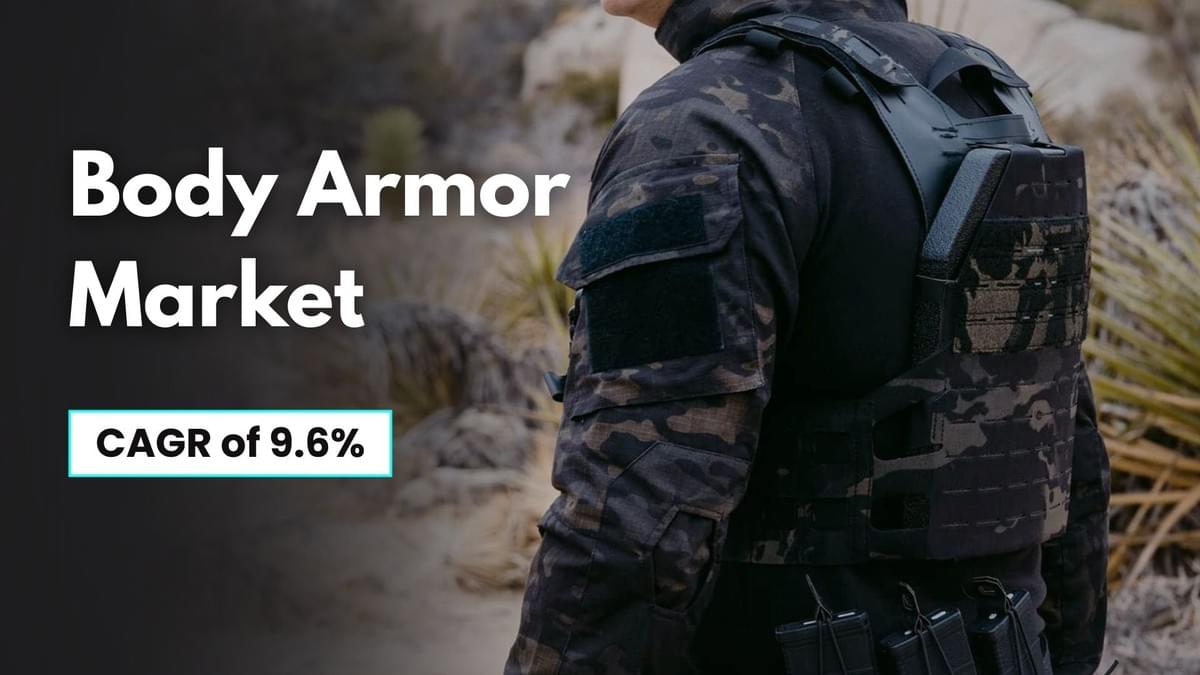According to Fortune Business Insights™, the global body armor market size was valued at USD 6.72 billion in 2024 and is projected to grow from USD 7.60 billion in 2025 to USD 14.42 billion by 2032, exhibiting a CAGR of 9.6% during the forecast period. The rising emphasis on soldier safety, modernization programs, and demand for advanced lightweight armor solutions are fueling market expansion.
Market Overview
Body armor serves as an essential line of defense for military personnel, law enforcement officers, and civilians, providing protection against ballistic threats such as bullets, shrapnel, and explosive fragments. Recent advancements in material science and ergonomic design have significantly improved both the protection level and mobility of armor systems.
Global demand is being driven by heightened security threats, increased terrorist activities, and government investments in modernizing military equipment. Lightweight, modular, and scalable designs are gaining traction, as they enable adaptability to diverse operational environments.
Competitive Landscape
The market is highly competitive, with leading multinational defense corporations and specialized protection equipment manufacturers competing for contracts and market share. Companies are focusing on R&D investments, product innovation, and strategic partnerships to maintain their positions.

Key Players Profiled:
- 3M (U.S.)
- ArmorSource LLC (U.S.)
- BAE Systems (U.K.)
- DuPont (U.S.)
- Eagle Industries (U.S.)
- Gentex Corporation (U.S.)
- Honeywell International Inc. (U.S.)
- Armor Express (U.S.)
- Point Blank Enterprises Inc. (U.S.)
- Revision Military (U.S.)
These companies leverage government contracts, advanced defense technology integration, and global distribution networks to strengthen market dominance.
Information Source:
https://www.fortunebusinessinsights.com/body-armor-market-113318
Segmentation Analysis
By Application
The army segment currently dominates the market and is projected to record the highest CAGR, driven by the increasing demand for advanced protection systems to safeguard soldiers in conflict zones. This growth is further fueled by ongoing geopolitical tensions and modernization initiatives, such as the U.S. Army’s Modular Scalable Vest (MSV) Gen-II program, which highlights the shift toward adaptable armor solutions. The air force segment is expected to witness steady growth, supported by the requirement for lightweight, compact armor that integrates seamlessly with flight gear while offering shrapnel and ballistic protection. The rising adoption of smart armor systems is also boosting this segment. The navy segment, while holding a smaller market share, is anticipated to grow steadily due to the demand for maritime-specific armor systems capable of withstanding harsh environmental conditions.
By Material
Bulletproof military vests account for the largest market share, supported by continuous innovations in materials such as Kevlar, Dyneema, and UHMWPE fabrics that deliver high ballistic resistance without compromising flexibility. Full body tactical armor is expected to post the fastest CAGR, driven by the rising threat from high-caliber weapons and explosive devices, which is prompting the need for comprehensive body coverage. The “others” category includes soft armor, hard armor, and concealed vests tailored for specific operational requirements, offering versatility for diverse mission needs.
Market Dynamics
Drivers
Military Modernization Programs – Governments worldwide are prioritizing the modernization of soldier protection systems, incorporating advanced materials and hybrid armor designs to improve combat survivability.
Technological Advancements – The adoption of graphene composites, ceramic plates, and smart textiles is significantly boosting ballistic performance while enhancing wearer comfort and situational awareness.
Restraints
High Manufacturing Costs – The use of high-performance materials and adherence to stringent regulatory standards drive up production costs, creating adoption barriers in budget-constrained regions.
Opportunities
Civilian Market Expansion – Rising concerns over personal safety, coupled with demand from private security firms, are fueling interest in modular and concealable armor, opening new avenues beyond the defense sector.
Regional Insights
North America – North America remains the largest market, driven primarily by the United States, which allocated USD 842 billion in defense spending for FY2024. Programs such as the Soldier Protection System continue to fuel demand for next-generation body armor with enhanced mobility, protection, and modularity.
Europe – Europe represents the second-largest market, supported by NATO-led modernization initiatives and substantial government investments in lightweight, modular armor systems for both military and law enforcement use.
Asia Pacific – Asia Pacific is projected to witness the fastest growth rate during the forecast period, propelled by rising defense budgets in China and India. The region is also seeing increased civilian adoption of personal protection solutions amid urban security concerns.
Rest of the World – Growth across Latin America and the Middle East & Africa is being driven by escalating crime rates, cross-border security challenges, and persistent regional conflicts, boosting demand for both military-grade and private security armor solutions.
Recent Industry Developments
August 2024 – British Military Unveils Next-Generation Body Armor
The British Armed Forces introduced an advanced body armor system designed to counter modern warfare threats, including drones and laser detection. The upgraded kit enhances soldier protection while improving situational awareness and decision-making capabilities on the battlefield.
No responses yet